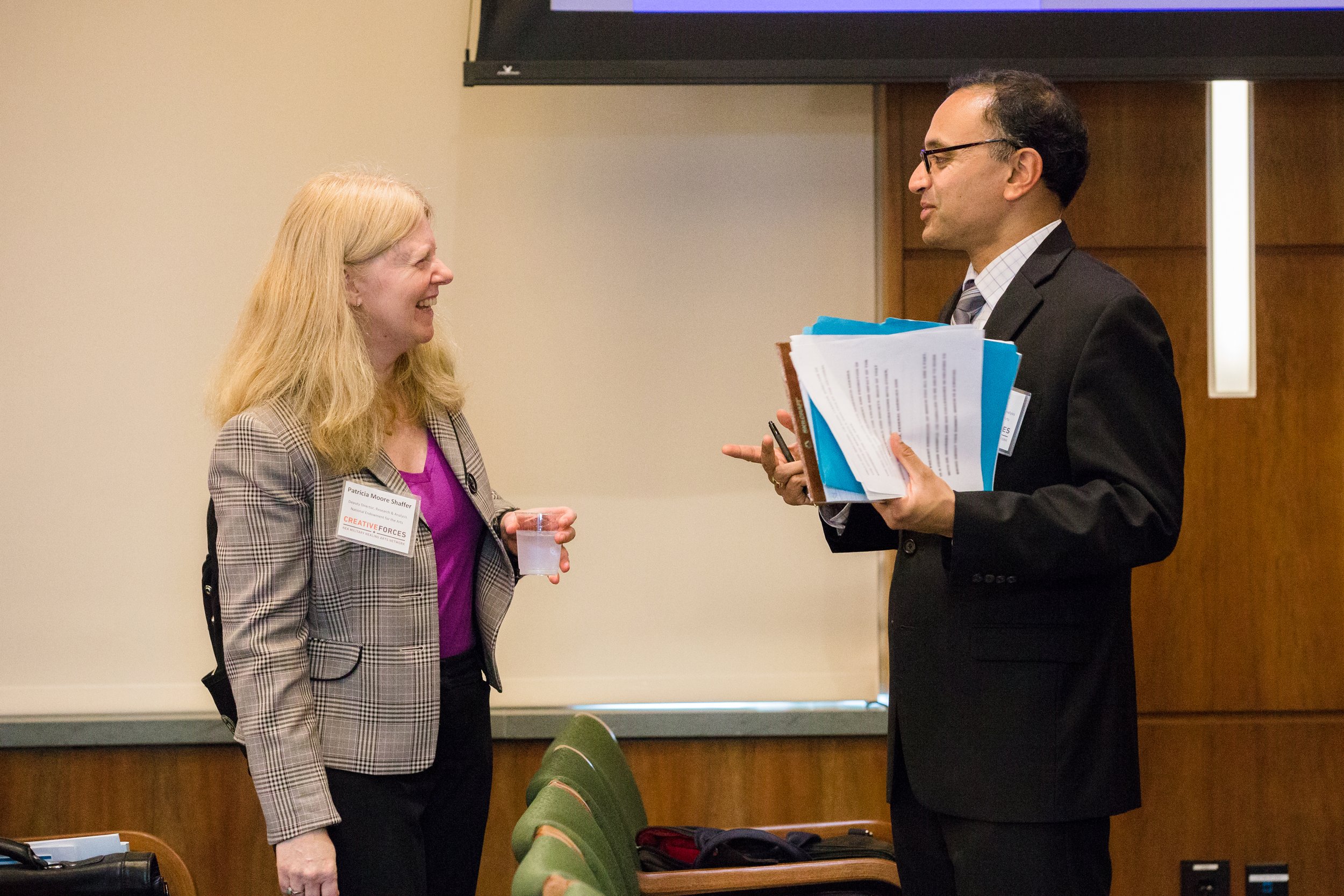Photo by Tima Miroshnichenko (Pexels)
It’s been two years since the World Health Organization declared COVID-19 a global pandemic. Early in the crisis many Americans felt a sense of solidarity and shared sacrifice. We were in it together—locking down, going on Zoom, celebrating the nation’s brave healthcare workers at 7 pm every evening. Pretty quickly, though, it became clear that people’s employment and economic situations were very different, depending on where they worked, how they worked, and what they did. Of all the sectors of the economy, the arts were among the quickest affected and hardest hit. Theaters and concert halls closed, festivals were silenced, and museums went empty. For artists and everyone around them, it felt like—and often was—an existential crisis.
Last week the National Endowment for the Arts (NEA) and the Bureau of Economic Analysis (BEA) released a report quantifying the economic impact of COVID-19 on the arts and culture sector. It is the first in-depth analysis of new BEA data from the Arts and Cultural Production Satellite Account. (For the BEA’s definition of what constitutes arts and culture please see the footnote at the end of this article.)
National Endowment for the Arts (NEA) Director of Research & Analysis Sunil Iyengar (right) with NEA Deputy Director of Research & Analysis Patricia Moore Shaffer at an NEA Creative Forces Research Summit. Photo by Yassine El Mansouri, courtesy of the NEA
To make sense of the report and its underlying data I spoke with Sunil Iyengar, Director of Research & Analysis at the NEA. He began our conversation with a stark confession. “We knew in our bones that 2020 was a devastating year. This report shows that it was the most severe economic setback for the arts in the last 22 years for which we have data.”
While the Arts and Cultural Production Satellite Account for 2020 should provoke a broader and deeper study, here are some initial takeaways:
1. The total contribution of arts and culture as a percentage of gross domestic product (GDP) remains strong
According to this report, the arts and culture sector in 2020 contributed $876.7 billion to America’s gross domestic product, or 4.2 percent of GDP. This is down from its contribution in 2019 of $919.7 billion, but only a tenth of a percent difference (2019 was 4.3 percent) of total GDP.
Despite the reduction of total dollars and percent of contribution to GDP, the arts and culture sector was still stronger in 2020 than more commonly cited sectors such as transportation, outdoor recreation, mining, and agriculture. It’s a reminder of how underappreciated the contributions of arts and culture are to America’s economic health.
Image courtesy of: National Endowment for the Arts
2. Segments of the arts and culture sector experienced the economic shock of the pandemic in strikingly different ways
The variety of disciplines in the arts and culture sector—music, dance, theater, the visual and literary arts, television and radio, film and video, web production and streaming, of commercial and nonprofit entities—contributes to the sector’s vitality and economic strength. But that diversity can mask huge disparities when considering top-line numbers like the above.
The new BEA data reveals that the performing arts sustained catastrophic economic losses from COVID-19. Quoting directly from the report: “After adjusting for inflation, the value added by performing arts presenters (including festivals) fell by nearly 73 percent between 2019 and 2020.”
Not unsurprisingly, given the dramatic increase in remote work and demand for online entertainment during the first year of the pandemic, arts sectors that served those specific needs jumped in value. “During the first COVID year, web streaming and web publishing went through the roof,” said Iyengar. “In fact, it’s now one of the largest arts industries.”
Photo by Mikhail Nilov (Pexels)
3. Under enormous stress, artists and arts organizations were inventive and resourceful
In January of 2021, Iyengar’s office at the NEA published a guide called “The Art of Reopening.” Though he admits it was an ambitious title, especially at that time, Iyengar explained that being able to spotlight the ways that arts organizations continued their missions and served their audiences was a key to sharing lessons learned during the worst of the pandemic. “The industries that are still working and thriving—including performing artists and performing arts presenters—the reason they’re thriving is because of their ingenuity.”
Do the data show that resourcefulness and creativity paying off? It’s a mixed picture. The arts and culture industry rebounded in 2021 from the lows of 2020—but economically, it is not where it was in 2019.
This is reflected in revenue earned by the hardest hit disciplines like the performing arts, but even more so in employment numbers. Total arts and culture unemployment declined in 2021 by a bit more than 3 percent, which is good news. But to get back to where the sector was in 2019, unemployment needs to drop by another 3.5 percent.
Image courtesy of: National Endowment for the Arts
4. Data for independent contractors and the self-employed are not well represented
According to a report authored by the NEA in 2019 titled “Artists and Other Cultural Workers: A Statistical Portrait,” roughly 34 percent of artists are self-employed, compared to 9 percent of all U.S. workers.
But data on gig workers and the self-employed are still hard to come by. According to Iyengar, there are several reasons for this. Primarily, it’s because agencies like the NEA and BEA track business data, not household data. So, while the economic contributions of the self-employed to the arts sector are captured and included in the report, detailed information on how many independent contractors are working in each arts sector, and whether they had more or less work in 2020 compared to previous years is not.
Why is this an issue that needs attention? First, the self-employed are excluded from employment data represented in the charts above. For the arts sector, which employed more than a third of their workers in 2019 as independent contractors, that’s a significant omission. Second, the arts may be a bellwether for this trend in other industries. And it’s likely that the pandemic-related increase in remote work will only accelerate that movement.
While it is beyond the purview of the NEA, Iyengar points towards the rich trove of local data as a way to uncover this information. “Every community has its own story in terms of arts employment. Some of the best arts research is local because it can look at who has filed claims for unemployment, look at wanted ads, do web scrapes from the internet, put them all together, and then conjoin them with census data. That’s very hard to do at a national level because it’s vast.”
Photo by Valeria Ushakova (Pexels)
5. This data collection, reporting, and year-over-year tracking is a unique resource for the arts and culture sector
This annual report relies on the tight cooperation between two government agencies, a partnership that most people know nothing about. That coordination generates a level of detail that allows researchers and policymakers to monitor trends and for artists themselves to understand how their work fits into the larger economy.
“For the BEA to go deep into the arts components of other industries—not just whole industries, but components of those industries—is quite a feat at the national level to show these statistics,” explained Iyengar.
It is not a perfect report. Something of this complexity never is. But the NEA is always looking to make it better and more useful for its constituents.
“I think everyone would like a more comprehensive, easy-to-understand way of articulating how valuable artists are to a variety of other sectors and what are their unique needs and support systems,” said Iyengar. “That’s something we’re continually tracking and hoping to develop through our research grants and our own work over the next few years.”
Photo by Mart Production (Pexels)
We are 22 years into this new century, and the arts and culture sector has already weathered three major economic setbacks—the post 9/11 recession, the great recession of 2008, and the deepest one yet, the shock of COVID-19.
But after each crisis, artists regrouped, built new audiences, found new funding, and did what they do best—used their creativity to make sense of a shared trauma.
This report from the National Endowment for the Arts and the Bureau of Economic Analysis doesn’t supply a roadmap for what should come next. Its value is in the precision of its data—a tool to cut through the fog of the past two years and find a way forward.
“In the face of all this, I think we can look to the ingenuity of artists and arts organizations,” said Iyengar. “The reality is that they’re the ones who are innovating their future.”
*When speaking of data, it’s essential to be clear about what that data is referring to—especially because words like “art” and “culture” resist a uniform interpretation. The BEA should be commended for including the following criteria in the report: “Culture can be defined in a variety of ways, including language, traditions, beliefs, and values. For this account, arts and cultural production is defined narrowly to include creative artistic activity—the goods and services produced by it, the goods and services produced in support of it, and the construction of buildings in which it takes place.”
- -
Published here on Forbes.com
March 21, 2022








